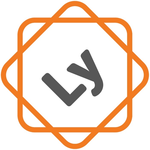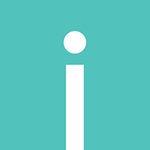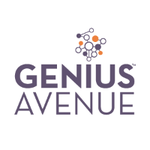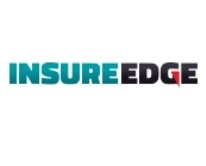Yes, most health insurance software may be accessed from a variety of devices and platforms, including PCs, laptops, tablets, and smartphones. It is designed to work with a variety of operating systems and web browsers, allowing consumers to access and manage their insurance accounts on the move. This allows individuals to keep informed and in charge of their health insurance coverage from any device they like.
List of Best Health Insurance Software
AgencyBloc is a agency management system designed for GA, IMO, MGA, solo life, FMO, and health insurance agencies. With its user-friendly platform, AgencyBloc streamlines operations and improves productivity. Simplify your agencys processes and save...Read More AgencyBloc
Experience the power of the Oracle Healthcare Cloud solution for digitalizing hospital management. With its cutting-edge healthcare analytics and management tools, this budget-friendly solution is perfect for hospitals and clinics of any size. Simpli...Read More Oracle Healthcare Cloud
Applied Epic is a insurance agency software designed to streamline your operations and improve client interactions. Its cloud-based platform enables seamless task automation, efficient sales management, and organized financial accounting. Take advant...Read More Applied Epic
Insly is a insurance software that caters to the needs of insurers, brokers, and agents. It provides a user-friendly platform for managing billing, accounting, debt management, contact information, and reporting. Simplifying policy creation and manag...Read More Insly
Indio Technologies is the solution for insurance applications. Our cutting-edge technology streamlines and expedites the process, replacing traditional paperwork with a modern, user-friendly interface. Increase productivity and enhance client satisfa...Read More Indio Technologies
Jenesis Insurance is a agency management software for insurance companies. Elevate your online presence with our affordable and advanced system, equipped with a range of features to streamline your operations. Our dedicated support team is available...Read More Jenesis Insurance
Reimbursify - the hassle-free solution for out-of-network healthcare claims. Our easy-to-use platform simplifies the process and tracks reimbursements, guaranteeing that you receive everything youre entitled to. With exceptional support, you can rely...Read More Reimbursify
EnoviQ is revolutionizing the insurance industry with our cutting-edge API solutions, seamlessly integrated into our robust cloud-based platform. Our sophisticated technology simplifies processes, customizes services for unique preferences, and foste...Read More EnoviQ
Vitaminise is a CX automation software developed by DICEUS specifically for insurance companies. This all-in-one solution offers five innovative products, perfect for insurance companies offering a range of services like health, car, travel, and home...Read More Vitaminise
Novo Connection is a software designed for brokers and their clients to streamline the self-funding process. Its intuitive interface, verified suppliers, and affordable stop-loss options result in considerable cost savings and informed choices. Utili...Read More Novo Connection
Welcome to HealthSherpa is a solution for effortless health insurance enrollment. Our platform features an easy-to-use interface, real-time plan comparisons, and personalized support, saving you time and hassle. With HealthSherpa, the daunting task o...Read More HealthSherpa
EvolveNXT is a software platform that seamlessly integrates with your business operations. It offers advanced analytics and easily navigable interfaces, boosting productivity and streamlining workflows. With real-time insights at your fingertips, Evo...Read More EvolveNXT
Alan, your ultimate health companion that streamlines your healthcare experience. Our user-friendly app provides effortless access to medical experts, quick reimbursements, and personalized wellness resources. With Alan by your side, staying healthy...Read More Alan
Genius Avenue offers comprehensive Benefits Administration Software designed to suit the requirements of Enterprises, SMEs, and StartUps. Its advanced features make it a perfect choice for both Web App and Android users. This intuitive platform ensur...Read More Genius Avenue
InsureEdge is a software solution designed to streamline policy management and claims processing for insurance companies. Its centralized platform simplifies customer onboarding, policy administration, and reinsurance processes, leading to increased...Read More InsureEdge
Learn More About Health Insurance Software
- What Is Health Insurance Software?
- What Are The Recent Trends In Health Insurance Software?
- Benefits Of Using Health Insurance Software
- Important Factors To Consider While Purchasing Health Insurance Software?
- What Are The Key Features To Look For In Health Insurance Software?
- Why Do Businesses Need Health Insurance Software?
- How Much Time Is Required To Implement Health Insurance Software?
- What Is The Level Of Customization Available In Health Insurance Software?
- Which Industries Can Benefit The Most From Health Insurance Software?
- Conclusion
What Is Health Insurance Software?
Health insurance software is a useful tool for simplifying and streamlining the administrative operations associated with managing health insurance plans and claims. It is intended to help insurance companies, healthcare providers, and employers manage enormous amounts of patient data more efficiently while still ensuring correct billing and claims processing.
At its core, health insurance software is a digital platform that allows users to store, organize, and retrieve patient and insurance information in a secure, centralized database. This not only saves time and effort, but also reduces the possibility of errors or contradictions in data entry. One of the most important advantages of health insurance software is its ability to automate a variety of operations, including claim submission, eligibility verification, and payment processing.
This not only speeds up the process, but also lowers the possibility of human error, resulting in a highly efficient and dependable solution. Many health insurance software packages also include comprehensive reporting and analytics features, allowing customers to track metrics like claims handled, denied claims, and income generated. This information can then be used to identify areas for improvement and streamline operations, resulting in improved financial outcomes.
Furthermore, as telemedicine and remote healthcare services become more prevalent, health insurance software is increasingly including features that allow for virtual consultations and electronic document interchange. This makes it easier for patients and healthcare providers to access and share medical records, which is especially important given current health issues.
When shopping for health insurance software, consumers should search for a system that is user-friendly, configurable, and complies with industry rules. It should also provide strong security measures to secure sensitive patient data and integrate seamlessly with other systems like electronic health records (EHR) and practice management software. Investing in health insurance software can provide major advantages to insurers, healthcare providers, and employers. Its capacity to expedite operations, minimize errors, and enhance financial outcomes makes it an essential tool in today's fast-paced and ever-changing healthcare industry.
What Are The Recent Trends In Health Insurance Software?
The health insurance market has changed dramatically in recent years, and technological advancements have had a big impact on how health insurance is managed. With the growing demand for effective and simplified operations, health insurance software has become a critical component of the industry. To make the best purchasing decision, consumers must stay up to date on the current trends in health insurance software.
Here are the latest trends in health insurance software that you should be aware of.
1. Cloud-Based Solutions: One of the most significant changes in health insurance software is the migration to cloud-based solutions. These solutions make data more accessible, secure, and scalable. Insurers who employ cloud-based software can save money on infrastructure and gain access to real-time data, allowing them to make faster and more informed choices.
2. Emphasis On Data Analysis: Data analytics are becoming increasingly crucial in the health insurance sector, and software companies are implementing complex data analytics technologies into their products. These techniques can help insurers generate more accurate projections, identify cost-cutting opportunities, and boost overall efficiency. With data analytics, insurers can obtain a better understanding of their members' behavior and make data-driven decisions to improve their services.
3. AI And ML: Artificial intelligence and machine learning are rapidly altering the healthcare business, including health insurance. AI-powered chatbots, virtual assistants, and other intelligent automation tools are being added to health insurance software to improve customer service and optimize operations. Furthermore, ML algorithms are being utilized to analyze data and make personalized suggestions and risk assessments, resulting in increased efficiency and accuracy.
4. Mobile Applications: The use of mobile devices has grown tremendously in recent years, and health insurance software vendors are responding to this trend by providing mobile applications. These apps enable users to access their insurance information, submit claims, and engage with their insurers while on the go, making the process more convenient and user pleasant.
5. Integration With The Electronic: Health Records (EHR) Integrating health insurance software with EHR systems is becoming important in the healthcare business. This interface enables healthcare providers and insurers to seamlessly share patient data, decreasing errors and increasing care coordination. This trend is projected to continue as demand for integrated healthcare solutions increases.
Benefits Of Using Health Insurance Software
Health insurance software is a useful tool for insurance companies, organizations, and people to manage and expedite the process of obtaining and using health insurance. It streamlines the difficult processes of tracking, assessing, and modifying health insurance plans, making it a must-have investment for any organization or individual looking to improve their healthcare experience.
One of the primary advantages of adopting health insurance software is the ability to increase efficiency and accuracy. Traditional paper-based methods are error-prone and time-consuming. Insurance carriers can use software to automate operations like data entry, claims processing, and plan modifications, lowering the chance of errors and saving time for both the provider and its customers.
Another benefit of health insurance software is the ability to deliver real-time data and insights. It enables employers and insurance companies to collect and analyze data on claims, medical expenses, and plan utilization, allowing them to make more educated decisions about plan design and pricing. This information can also be used to discover patterns and make changes to improve the overall coverage and cost-effectiveness of the plans.
Furthermore, health insurance software provides a pleasant and user-friendly experience for both providers and insured parties. Individuals can easily access their insurance information, such as coverage details, claim status, and plan updates, using a secure internet portal or mobile app. This lowers the need for paperwork and phone calls, allowing individuals to better manage their healthcare coverage.
One of the most major advantages of health insurance software is its capacity to enhance communication and collaboration among insurers, employers, and individuals. With consolidated and easily accessible data, all parties involved may stay informed about plan modifications, claims, and other vital information, promoting transparency and trust in the insurance process.
Important Factors To Consider While Purchasing Health Insurance Software?
When contemplating acquiring health insurance software, it is critical to evaluate a variety of aspects to ensure that you make the best option for your organization's requirements. The correct health insurance software may simplify processes, enhance accuracy, and boost productivity, resulting in significant cost savings for your company.
Here are some crucial aspects to consider when buying health insurance software.
1. Functionality And Features: The first and most important consideration is the functionality and features provided by the health insurance software. It should be capable of handling all health insurance-related tasks, including enrollment, claims processing, billing, and client management. Look for features like automated processes, document management, and analytics to make sure the program matches your specific needs.
2. Customization And Scalability: Each firm has distinct demands and workflows, therefore it is critical to select health insurance software that can be tailored to your specific business procedures. Furthermore, the software should be scalable enough to support your company's future development and changing needs.
3. Security And Compliance: Because health insurance software handles sensitive information such as personal and medical data, security and compliance must be carefully considered. To protect sensitive information, ensure that the software includes strong security mechanisms such data encryption. Also, ensure that the software meets all applicable requirements and standards, such as HIPAA and HITECH.
4. Integration And Compatibility: Determine whether the health insurance software can be integrated with your current systems, such as electronic health records (EHRs), accounting software, and other critical tools. This will enable a smooth flow of data and information between systems, saving time and lowering the possibility of errors.
5. Ease Of Utilize And Training: You don't want to invest in health insurance software that is too hard for your team to utilize efficiently. Look for software with an easy-to-use interface and straightforward navigation. Consider the software company's training and assistance to guarantee that your team can fully utilize the product.
6. Cost: Health insurance software can be a considerable investment, therefore it is critical to weigh the costs carefully. Look for software that provides a comprehensive package at an affordable price, including all necessary features, support, and customization.
What Are The Key Features To Look For In Health Insurance Software?
Health insurance software is critical for insurance companies, hospitals, and healthcare providers to effectively handle and process health insurance claims and policies. When investing in health insurance software, it is critical to examine the important features that will benefit your firm.
The following are the top features to look for in health insurance software.
1. Claims Management: Efficient claims administration is critical for all insurance companies. Look for software that provides complete claims management, from initial submission to processing and payment. It should also include real-time status updates and features for claim monitoring and reconciliation.
2. Policy Management: Ensure that the software includes a powerful policy management system that enables for easy policy development, modification, and renewal. It should also include tools for managing numerous policies, group policies, and family plans.
3. Electronic Health Record: The integration of electronic health records (EHR) is an essential component in health insurance software. EHRs speed up the process of accessing patient information and improve communication between healthcare professionals and insurance organizations.
4. Billing And Payment: Efficient invoicing and payment processing are required for prompt and accurate reimbursements. The program should have tools for managing premiums, co-payments, deductibles, and other invoicing details. It should also enable a variety of payment options and send automatic payment reminders.
5. Provider Network Management: The program should have a full provider network management system to handle contracts, claims, and reimbursements from healthcare providers. It should also be easy to add and amend providers' information.
6. Compliance & Security: In the healthcare industry, compliance and security are important issues. Look for software that meets industry standards like HIPAA and has strong security mechanisms in place to secure sensitive patient data.
7. Data Analysis And Reporting: Access to real-time data and analytics is critical for making sound business decisions. Look for software that has customisable dashboards, reporting tools, and analytics to help you measure key performance indicators and discover areas for improvement.
8. Mobile Access: With the growing popularity of mobile devices, it is critical for health insurance software to have a mobile application or adaptable design for simple access on the go. Mobile access enables quick and effective communication between insurance companies and healthcare providers.
9. Customer Service & Support: Choose software from a respected firm that offers good customer and technical support. This is critical for addressing any issues or concerns that may occur during the software's installation or use.
Why Do Businesses Need Health Insurance Software?
Health insurance is an integral part of every company's financial strategy and employee benefits package. However, administering and organizing health insurance can be a difficult and time-consuming task, particularly for companies with a large workforce. Health insurance software can help firms streamline and automate their health insurance procedures.
First and foremost, health insurance software makes the enrollment process easier for employees. Employees may use this program to effortlessly access and review their health insurance options, choose the plans that best fit their needs, and enroll in a few simple clicks. This removes the need for manual paperwork, lowering the likelihood of errors and delays. Furthermore, health insurance software provides organizations with detailed insights into their health insurance data.
It enables them to monitor employee participation, expenses, and coverage details, allowing businesses to make educated decisions during open enrollment times. This data also enables firms to track employee health and wellness trends, identify potential dangers, and take proactive steps to improve worker health. Another significant advantage of health insurance software is its capacity to simplify the claims process.
It enables employees to submit and track health insurance claims digitally, decreasing paperwork and processing delays. This not only saves time, but also increases employee happiness and engagement by offering an easy and clear solution. Furthermore, health insurance software interfaces with payroll and other human resource systems, allowing organizations to better manage employee information and benefits.
This integration eliminates the need for double data entry, lowering the risk of human mistake and saving time for HR staff. In addition, several health insurance software solutions include wellness programs, health risk assessments, and virtual counseling services to promote employee health and well-being. This can result in a healthier and more productive staff, lowering long-term healthcare expenses for organizations.
Overall, health insurance software simplifies and automates important business-related health insurance management procedures. It saves time, reduces administrative load, improves data quality, and encourages employee wellness, making it a must-have tool for any company trying to improve its health insurance operations. Consider investing in a reputable health insurance software system to simplify health insurance management and provide your employees with a convenient and robust healthcare experience.
How Much Time Is Required To Implement Health Insurance Software?
The time required to implement health insurance software varies based on a number of factors, including the software's complexity, the size of your firm, and the level of customization necessary. However, the usual time ranges from a few weeks to many months. The first step in installing health insurance software is to review your organization's existing processes and identify any holes that the software can fill.
This can take a few weeks to a month, depending on your organization's size and stakeholder availability. The next step is to explore numerous software solutions and select the one that best meets your organization's needs. This could take a few weeks or possibly a month, depending on how much customisation is required. Once the program has been chosen, the implementation phase can begin.
This includes installing the software, customizing it to work with your organization's operations, and testing it for problems or issues. This phase might last from a few weeks to a few months, depending on the software's complexity and the availability of resources for implementation. After the program has been properly integrated, staff must be trained to ensure their familiarity with the software and its features.
This can take anything from a few days to a couple of weeks, depending on the size of your firm and the number of individuals that need to be trained. Finally, the go-live phase entails switching from your present procedures to the new software. This involves extensive testing and may take many weeks to ensure a smooth changeover.
What Is The Level Of Customization Available In Health Insurance Software?
One of the most significant factors to consider when selecting health insurance software is the level of customization available. This refers to the capacity to customize the software to your own business requirements and preferences. In a highly competitive and continually changing sector like health insurance, having software that can be tailored to your specific needs can provide a considerable edge.
When it comes to customisation, there are a few crucial factors to consider in health insurance software. The user interface comes first. Can you adapt the UI to reflect your company's branding and design? This can improve user adoption and provide a consistent experience for your staff. Furthermore, the ability to tailor the structure and grouping of features helps boost efficiency and expedite procedures.
Another factor to examine is the software's flexibility in terms of features and functions. Can it be adapted to your specific business model and processes? For example, if you provide a particular type of insurance or have a specific workflow for claims processing, the software should be able to accommodate these requirements. Furthermore, personalization in data management is critical.
The program should allow you to create, change, and delete data fields to capture the information you need for your organization. This can also include the option to create custom reports and analytics based on your own metrics and KPIs. It is also critical to examine the degree of customisation available for customer-facing functionality. Can you customize the member portal and mobile app to reflect your brand and offerings?
This can help you provide a seamless and tailored experience for your customers. Finally, customization should include integrations with other systems and vendors. The software should allow you a variety of integrations to fulfill your specific business requirements. This may involve integrations with billing systems, electronic health records, or telemedicine platforms.
Which Industries Can Benefit The Most From Health Insurance Software?
Health insurance software is an extremely useful tool for any firm that provides employee healthcare coverage. However, certain businesses will gain even more from incorporating this software into their processes. These sectors often deal with a high number of employees and complex healthcare plans, making benefit management and tracking more challenging.
The following industries can gain the most from health insurance software:
1. Healthcare Industry: While this may seem obvious, the healthcare industry can tremendously benefit from health insurance software. With a big number of employees and varied healthcare plans, it can be tough to keep track of all the necessary data and handle benefits efficiently. Health insurance software simplifies this procedure, allowing healthcare firms to manage their employee benefits while focusing on providing quality patient care.
2. Manufacturing Industry: Manufacturing organizations sometimes have a large and diversified workforce, making administering healthcare benefits difficult. Enrollment, eligibility verification, and claim monitoring can all be automated using health insurance software, making the process easier. This not only saves time and resources, but also ensures that employees receive the benefits they deserve without delay.
3. Retail Industry: Retail organizations often have a high turnover rate, making handling employee perks difficult. Retail firms can use health insurance software to easily onboard new employees and manage their benefits, eliminating the need for human paperwork. This not only saves time, but also reduces the likelihood of incorrect data entering.
4. Financial Industry: The financial industry is heavily regulated and handles sensitive personal and financial data. Health insurance software has strong security measures to ensure that employee data is secure and in compliance with industry laws. This provides companies and employees with peace of mind knowing that their information is secure.
5. Education Industry: Educational institutions, such as colleges and universities, frequently employ a big number of people and offer a variety of benefit alternatives. Health insurance software can not only automate and simplify the enrollment process for these organizations, but also assist them in identifying and addressing any coverage gaps. This leads to greater use of benefits and cost savings for both the institution and its employees. By deploying health insurance software, these businesses can improve their employee benefits administration process, decrease administrative burden, and ensure that employees have adequate healthcare coverage. This not only increases the organization's overall productivity, but it also promotes employee well-being and satisfaction.
Conclusion
To summarize, while selecting health insurance software, it is critical to thoroughly analyze your requirements and budget before making a decision. The appropriate software may significantly streamline and simplify your healthcare procedures, resulting in more efficiency and better patient care. By completing thorough research and taking advantage of free trials and demonstrations, you can guarantee that you are investing in a solution that matches your specific needs while also providing the best value for money.
It is also critical to consider characteristics such as data security, integration capabilities, and customer support while comparing software solutions. These elements have a significant impact on the software's overall effectiveness and usability. Furthermore, don't be afraid to speak with other healthcare professionals or seek expert guidance to obtain a better grasp of the software and its possibilities.
Reading reviews and testimonials from current users can also provide useful information about the software's performance and user experience. Remember that choosing the correct health insurance software is a critical decision that can significantly impact your practice or organization. By following the advice and considerations mentioned in this buyer's guide, you can make an informed and confident decision about the best software solution for your healthcare needs.
Health Insurance Software FAQ's
Can Health Insurance Software Be Accessed Across Multiple Devices And Platforms?
Is Health Insurance Software Future-Proof And Adaptable To Emerging Technologies Like AI, Blockchain Or IoT?
Yes, most modern health insurance software is designed to be future-proof and adaptable to upcoming technologies such as artificial intelligence, blockchain, and the Internet of Things. These software systems are regularly updated and modified to stay current with the newest breakthroughs and deliver the most efficient and secure services to consumers.
With the combination of AI, blockchain, and IoT, health insurance software may increase data analysis, fraud detection, and speed communication between insurers and clients, making it a useful tool for the industry's future.
Is There A Free Trial Offered To Assess Health Insurance Software Before Committing?
Yes, many health insurance software businesses provide free trials to potential clients so they can evaluate the product and its features before committing to a purchase. These trials normally last 14 to 30 days and allow consumers to test the software's functionality and usability. This enables potential clients to make an informed decision and confirm that the software fits their requirements prior to making a financial commitment.
Does Health Insurance Software Offer Data Security Features And Meet Regulatory Compliance Standards?
Yes, most health insurance software is designed to provide powerful data security measures while adhering to tight regulatory compliance criteria. Given the growing threat of cyber assaults and the sensitivity of personal health information, software developers recognize the significance of integrating data protection mechanisms.
This includes encryption, firewalls, and frequent security updates. Furthermore, health insurance software must comply with standards such as HIPAA to protect the privacy and security of patient information. Rest assured that trustworthy health insurance software will keep your data safe and secure.
Can Health Insurance Software Integrate Seamlessly With Existing Tools And Platforms?
Health insurance software is designed to work smoothly with existing tools and platforms, making it a straightforward and efficient choice for insurers. This enables smooth data movement between systems, lowering the chance of manual errors and increasing overall productivity.
Whether you employ accounting software, CRM tools, or electronic health records, the proper health insurance software can seamlessly connect and supplement your existing operations. This promotes a more efficient workflow and a better overall user experience.

















